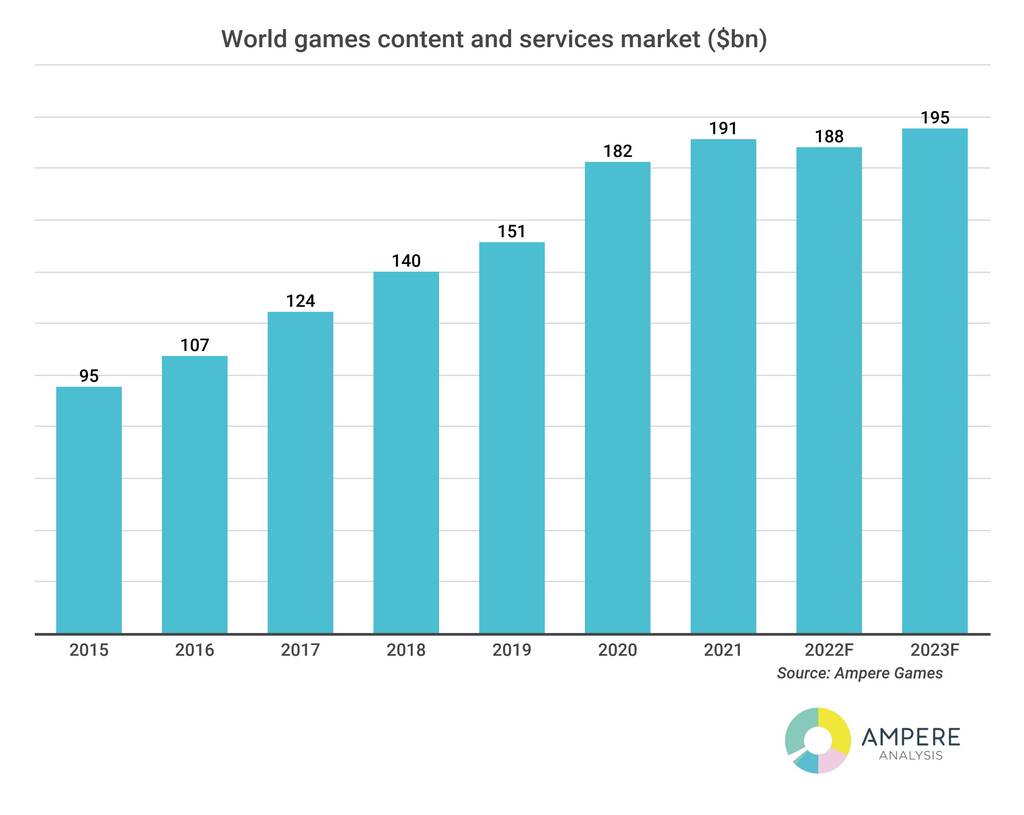The sale of games, consoles and subscription services contributed to a enormous $191bn global total in 2021, which will fall slightly to $188bn this year, according to Ampere Analysis. This follows extraordinary growth through the early stages of the pandemic, with a leap in spending especially noticable from 2020 onwards. The reasons for this decline vary by gaming platform, with supply chain issues continuing to bottleneck the availability of consoles and PC hardware. Ampere also notes a hit to PC gaming in key Asian markets due to the Covid-era closure of internet cafes, privacy changes on mobile devices impacting user acquisition, and the general withdrawal of support from Western companies for the Russian market following the country’s invasion of Ukraine. The study notes how video games are not immune to the wider impacts of inflation and the ongoing cost-of-living crisis, as some have suggested. However, the suggestion is the industry will recover in 2023, as component shortages stabilise, delayed games are finally released, and new markets continue to further adopt gaming. “After two years of huge expansion, the games market is poised to hand back a bit of that growth in 2022 as multiple factors combine to undermine performance,” research director and long-time video games market analyst Piers Harding Rolls said. “Even so, the year will end well ahead of pre-pandemic performance, and the outlook for the sector as a whole remains positive, with growth forecast to return in 2023.”
